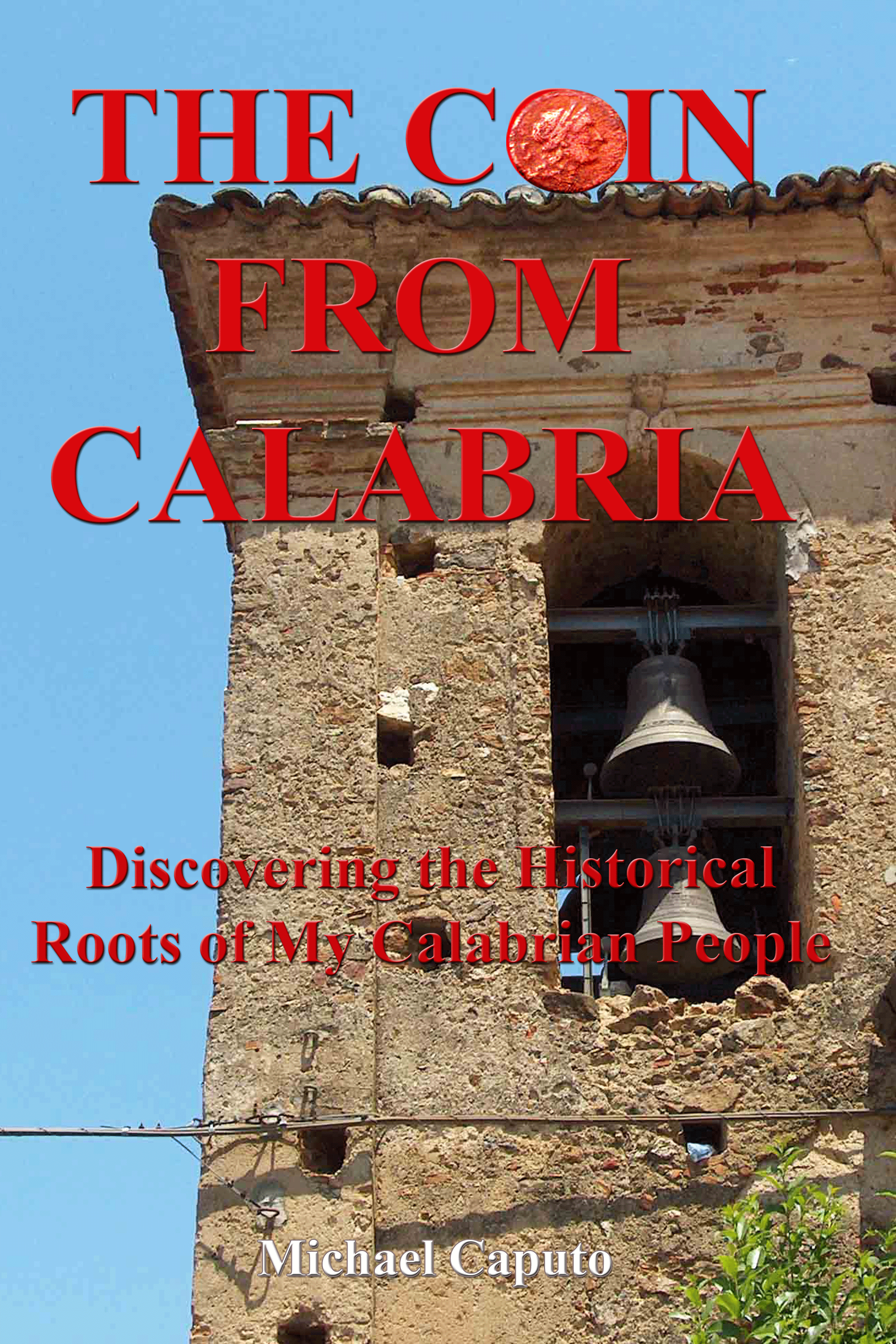Some Italians, and some North Americans have asserted that we
Calabrians are “Moors,” that is Africans. In saying so, they
erroneously assume that in the past all of Calabria was conquered
by the African Saracens, and that they remained in Calabria in
large numbers, after their defeat by the Normans. Furthermore,
some erroneously assume that the history of Calabria is
essentially the same as that of Sicily, which was, indeed,
conquered totally by the Saracens who ruled over it for about two
hundred years, and where some Arabs remained after their
defeat. Calabria’s experience with the Saracens was quite
different from Sicily's. Although some cities were conquered, and
controlled temporarily, the Saracens never succeeded in
conquering the whole Region, and colonizing it, as they did in
Sicily.
As stated above, some areas were conquered temporarily by
the Saracens, such as Reggio, in the southernmost part of
Calabria; Tropea, Amantea and the Rocca Fortress, on the
south-western side;
Squillace, Santa Severina, and Catanzaro on the Central-Eastern
side and Cosenza, and Rossano on the northern side.
Reggio was conquered by the Saracens in 902. This conquest lasted
a few months, and a new conquest was attempted again in 918, after
which they forced the people to pay 22.000 nomismata, yearly,
which was later halfed by the year 924. By 934, Reggio stopped the
payment. As a result, in 951 the Saracens crossed the strait and
conquered Reggio, and forced them to pay again. In 978-981 Reggio
and other centres were sacked again. Finally, all attacks ceased
in 1031, with the advent of a civil war in Sicily.
In 906 the Saracens took Catanzaro by night, and, after having
butchered part of the population, they took the rest to nearby
Squillace as slaves. They plundered all their possessions as well.
In spite of the seemingly hopeless state of affairs, Calabrians
did not take the invasions lying down. In the some areas, they
revolted and fought the invaders
bravely.
In 921 a rebellion by Calabrians forced the Saracens to leave
Calabria. The following year, a determined Saracen leader by the
name of Mikael (Asklabio), returned with fury, and sacked and
destroyed anywhere he could. This continued until 934 when, again,
the Calabrians revolted fiercely, and the Saracens were
conclusively forced to
leave
But the invasions did not end. Calabrians were in a state of
ongoing fear, for a long time still. The saracens could appear at
any time, unannounced, to pillage, destroy, and take young
Calabrians away as slaves, until they were finally defeated by
Catholic forces, and pushed back to
Africa.
Therefore, the assertion that Calabrians are in large part “Moors”
is unfounded. The Saracens used Calabria as an area to pillage,
and to take young people away as slaves. They did not settle there
as a people, nor did they create large colonies as they did in
Sicily. The reason was simple: Their people would have been in
danger by the Byzantines who ruled most of Calabria, by the
Normans that followed them, and by angry locals who did not take
invasions by non-Christians as acceptable, and rebelled whenever
they could.
Historian, Augusto Placanica synthesizes the struggle between the
Saracens, and the Byzantines in Calabria in the following
statement:
"Calabria…was a systematic battlefield…in the mortal challenge
between the Arabs and the Eastern Empire."
The
Calabrian areas that were temporarily conquered were simply Arab
military “arrowheads” into enemy territory; they were strategic
locations from where future expansions were to take place. Some
places, like Tropea, Amantea and Rocca Angitola became simply
military fortresses kept for strategic purposes. Calabrians'
response to the Saracen arrival was to simply move inland, which
is the main reason why countless villages were created on the
mountainous regions, away from the coast.
Carmelo Martorana, a 19th-century Sicilian historian who saw the
Saracens as part of his ancestry, and who held them in the highest
esteem, wrote the following about the Saracens' attitude toward
Calabria, in particular, and toward the rest of Italy, in general.
(After having subjugated Sicily, the Saracens) …put forth such
strength, that the riches of the Italic territory and its peoples
waited for two centuries as prepared prey of the Sicilian Saracens
as a meal specifically destined to fatten those our peoples. Thus
the Sicilian Emirs invested ever-increasing concern to denuding
that land with incursions and thefts instead of subjugating them
with sieges and with judiciously prepared battles. Furthermore the
Arab historians especially praise the Sicilian governors, for
having enriched the nation (Sicily) and filled the treasury with
ransacking and the tributes they oppressed Calabrians with.
The Saracens, therefore, proved to be more interested in sporadic
pillaging than conquering; pillaging that went on for decades,
which impoverished the Calabrians, and enriched the Sicilian
Saracens.
In spite of the relentless incursions, Calabria stood firm against
the brutal Saracens. The Orthodox Byzantines, the Catholic Normans
and the fiery Calabrians, created a barrier the Saracens tried to
totally penetrate in vain. Finally, they were pushed back into
their ships, and were forced to go back to where they originated
from.
Michael Caputo
Author of, UNDER A LION SUN: Childhood Days of Joy and Sorrow
in Old Calabria (Available on Amazon.com)
| |
| |
Under a Lion Sun:
Childhood Days of Joy and Sorrow in Old Calabria
(M. Caputo)

Available as paperback and
downloadable versions on Amazon in several countries. If not available
in your country, you may order from AMAZON.COM
|
|
Enter
another world through the eyes of Michelino (Meekehleeno), a boy who
grew up in Calabria, the southernmost Region of Italy, during the
fifties and sixties. Discover a society built on rigid expectations,
where family and honor were paramount and where violence was
all-too-often the favourite way to solving some of the painful
challenges of life.
In this
book you will also learn about Calabrians' attitude toward food,
discipline, education, destiny, the supernatural, exorcism, suicide,
mental illness, the handicapped, crime, etc.
You will
also meet, among others, the following unforgettables: Maestro Fera,
the teacher who had been an officer in Mussolini's army, who ran his
class like a battalion. Nino, the Mafia Boss, who collected lovers
like trophies and who was feared and revered by young and old. Toto'
the brilliant mind who will never have the opportunity to excel, due
to having been born on the wrong side of the fence. Salvatore, who
was tortured by life since childhood, in ways that most people will
never imagine. Tommasino, the gentle giant whose life was ended in a
most shocking and horrendous way.
If you
are a descendent of Calabria you will return in time to the moments
when your ancestors were torn apart by the curse of emigration, and
you will become aware of the forces that shaped your ancestors that
may have also contributed to shaping you.
But the
book does much more. It also traces how Calabrian customs and
beliefs have evolved up to our time and how Calabrian society has
moved forward in some respects while remaining fixed and immutable
in others.
By the
end of this book, you will know Calabrians--their strengths and
their weaknesses. You will grow to appreciate a people undaunted by
life's many challenges; a people who takes pride in their stubborn
spirit and their unwillingness to admit defeat, even if confronted
by penury and great suffering.
M. Caputo |
|
|
|
|
__________________________
[i]
"Ducato di Calabria." Wikipedia. n.d. n. page.
Web. 16 July 2012.
<http://it.wikipedia.org/wiki/Ducato_di_Calabria>.
[ii]
Sinopoli, Cesare,
et al. La Calabria: storia, geografia, arte. Soveria
Mannelli, Italy: Rubettino, 2004. 29.
Google Books. Web. 22
May 2013.
[iii]
Sinopoli et al. 29.
[iv]
Placanica, Augusto. Storia della Calabria, dall’antichita` ai
nostri giorni. Roma: Donzelli Editore, 1993. 75.
Google Books. Web. 22
May 2013.
[v]
Martorana, Carmelo. Notizie storiche dei Saraceni Siciliani.
Palermo: Pedoni e Muratori, 1832. 128.
Google Books. Web. 22
May 2013.

